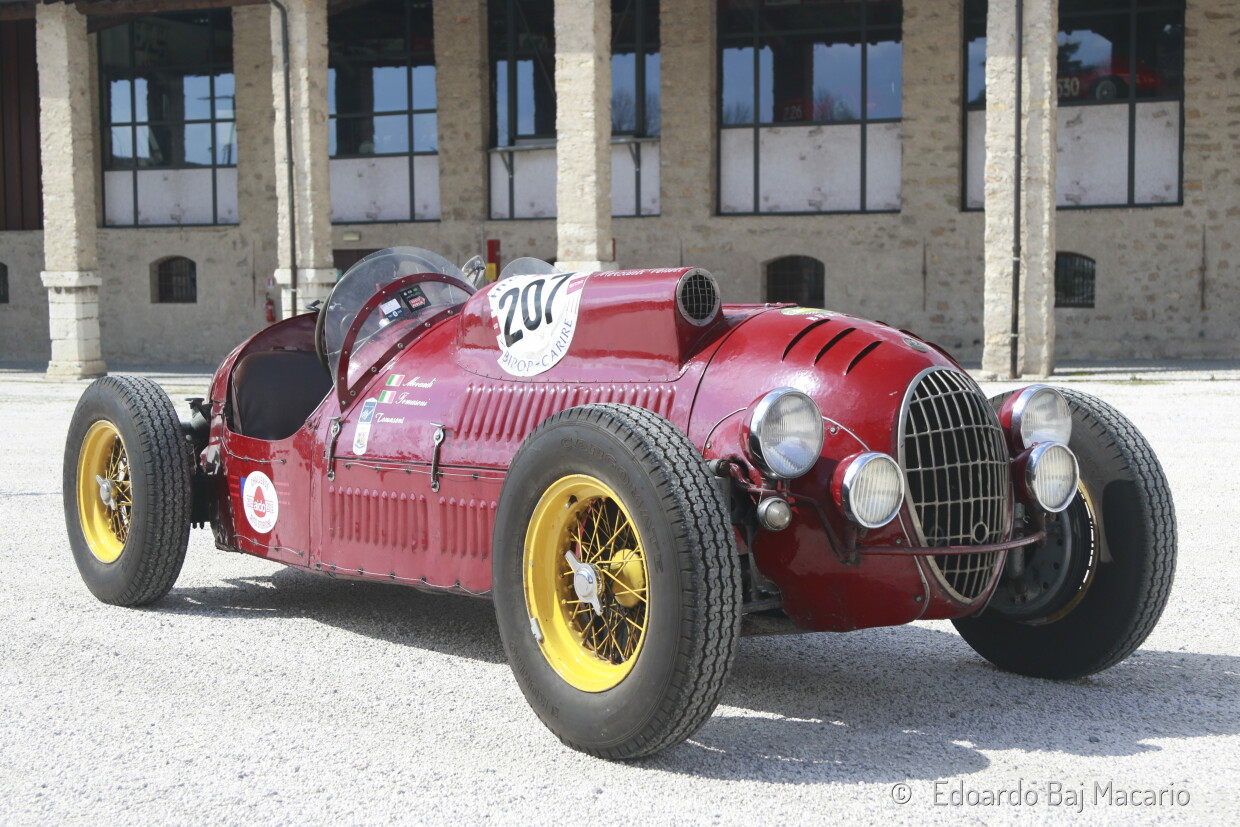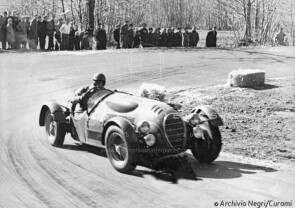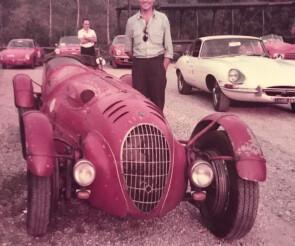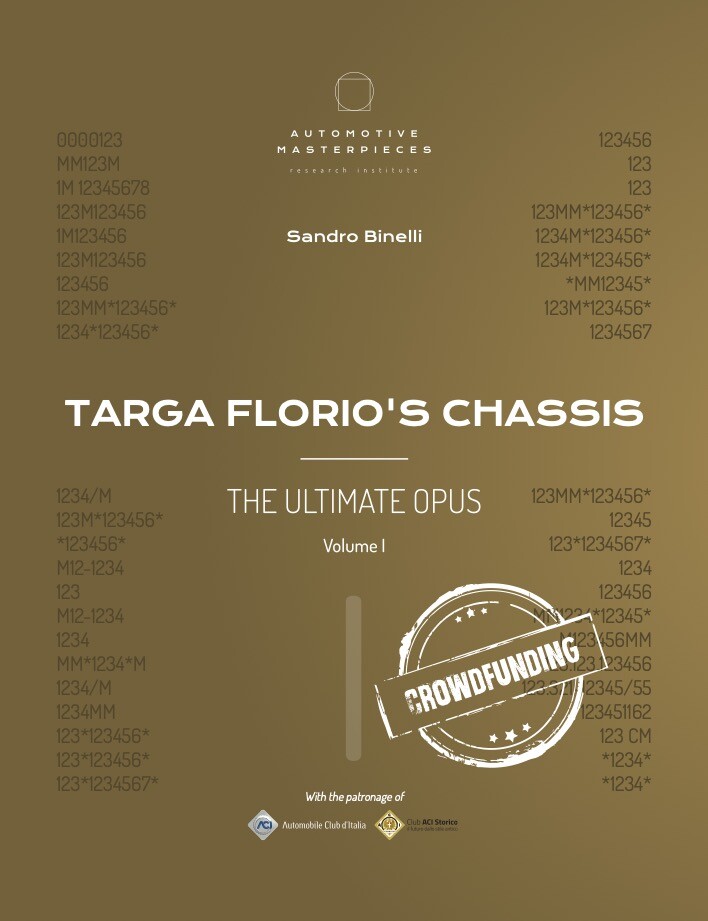
1947 AMP Special
ON/OFF
Why am I an Automotive Masterpiece?
The ending of World War II in Italy left lots of ruins and a joyful will to live in those who survived. The car-minded people, the racers, anyone tried to forget about the thunderstorm and to make dreams come true. Money and resources were fewer than ever, the roads were broken if not interrupted. But there were lots of military surplus and from the pre-war era. This is how a car with a steering wheel from a U.S. Army Jeep and a revamped engine from a competition Alfa Romeo was born.
The “AMP” Sport is an example of bravery and ingenuity of the resourceful artisans in the immediate post-war period and it’s a car with a great pedigree. This handicraft sports car was built in Rome after World War II by Placido Prete (hence the P in the name), installing a competition Alfa Romeo engine (the A of the name) 6C 2300B MM, brought to 2442 cc and fed by three double-barrel Stromberg carburetors of aeronautical derivation, on a tubular frame of unknown origin, using Maserati parts (the M of the name). The reworked Alfa Romeo engine produced 200 bhp, with a top speed of 240 km and was matched to its transmission. A powerful unit but a reliable one, above all. The Maserati components were in turn reworked and used in a tubular frame structure. Prete wanted to show his name on the car and so designed the emblem with the AMP initials against the backdrop of the Colosseum. Prete's goal was to create a “Sport” car, so to be competitive in class, particularly in races like the Targa Florio and the Mille Miglia and he succeeded. Entrusted to Giovanni Rocco, Italian Champion for “Voiturettes” drivers in 1937, the car made its debut in 1948, ranking 8th on the Circuit of Pescara. Pescara was an exhausting test at the time for the cars and drivers, due to the high speed sustained for a long time. The AMP Sport proved from the beginning that it was an absolutely reliable vehicle. Rocco led the car into an intense participation in the sporting events of the time, often with remarkable results, in class and overall. Together with Prete, he competed in the 1949 Targa Florio - Giro di Sicilia, obtaining a 3rd place overall: an exceptional placement already at the time, for a car that was not prepared and brought to the races by an official racing team. At the 1949 Mille Miglia the Rocco-Sorrentino team, even if sixth at the Rome check-point, was instead forced to withdraw before the check-point in Pescara. Great commitment but little luck even at the 1950 Gran Premio di Napoli. Later, Francesco Santovetti bought the car from Prete, but continued to share the steering wheel with Rocco, who in 1952 was 1st in the Coppa dei due Laghi. Santovetti instead was 3rd at the Vermicino-Rocca di Papa. In 1953 the car, led by Scarlatti, was 2nd in the Coppa dei due Laghi. From 1948 to 1953 there are fourteen races certified by evidence in the career of the Alfa Maserati Prete but the history is certainly richer: several other races are reported in the story of the car and the historical researches in progress are checking them. Throughout its history, the car underwent several bodywork variants: from two to four headlights, with wraparound, partial or missing mudguards, with air intake on the hood or without, with or without windshield for the passenger. All testified by numerous vintage photos. The Alfa Romeo Maserati Prete is now listed both in the Alfa Romeo and Maserati registers and features a thirty-year career in re-enacting competitions. For twenty years it has been preserved in the same collection. In conclusion, it’s a car that joins the pre-war heroic times with the fantastic follies and genius of the post-war period. Incredibly symbol, at the same time, of the artisan bravery and the exceptional nature of the Italian automobile industry. A car with an intense and winning racing life, witnessed by significant images of the time. An even long life, that keep on for decades to give fun to those who race it in historical re-enactments. Restored in the years, the car is in full efficiency while preferring to keep a “patina” look to a “show-n-shine” condition.









